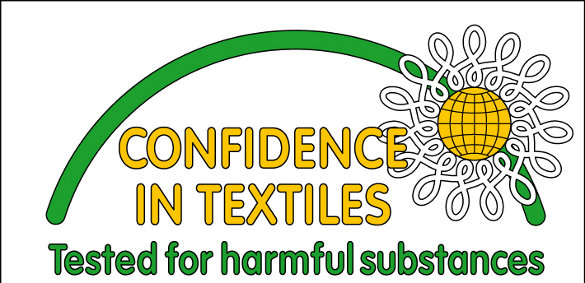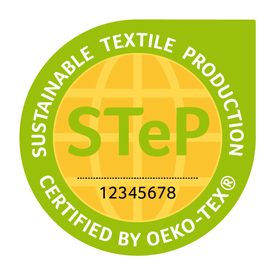
Oeko-Tex is, by numbers of products availale, both B2B as well as B2C, the most widely-used eco-label for textiles globally.
What most people aren’t quite aware of is, that Oeko-Tex offers 2 fairly substantially different certifications, namely:
- Oeko-Tex 100 standard is a product certification.
It is “an independent testing and certification system for textile raw materials, intermediate and end products at all stages of production. Examples for items eligible for certification: Raw and dyed/finished yarns, raw and dyed/finished fabrics and knits, ready-made articles” such as all types of clothing, domestic and household textiles, bed linen, terry cloth items, textile toys etc.
As a standard, it is a base level, and can be attained (relatively) easily. To the point that many household discount retailers across continental Europe, e.g. Poco, require all their household textile suppliers to comply with it. - Oeko-Tex 1000 standard in contrast, is a process management certification, i.e. offers a system for “testing, auditing and certification for environmentally friendly operations in the textile and clothing industry.” The criteria are thereby updated annually and assessed objecetively. As a result the achieved results (environmental as well as social) can evaluated for each of a company’s manufacturing sites. The focus is entirely set on continued and structured improvements of the current state towards a a better level of performance in the future.
When comparing the two approaches, one could probably casually say that Oeko-Tex 100 is ‘a beginner’s first step on the compliance ladder’, a taster if you like, where as Oeko-Tex 1000 is for those that know what they do, and ‘are in business for the real thing’.
As has been announced, Oeko-Tex 1000 is in the process of being replaced by a new certification system and concept, called Oeko-Tex STeP (STeP stands thereby for ‘Sustainablte Textile Production’, but also the step wise refinement of certifying whole supply chains).
The official launch will be in June 2013, at Messe Frankfurt’s Techtexile exhibition in Frankfurt.

What is Oeko-Tex STep?
Other than Oeko-Tex 100 or Oeko-Tex 1000, Oeko-Tex STeP is a facility as well as process certification.
The idea behind Oeko-Tex STeP is to provide production companies along the textile value chain with transparent documentation of their environmentally friendly and socially responsible production conditions. This importantly includes brand manufacturers, retailers, associations and non-governmental organizations.
The entire process is organised through and around a Web-based system, and requires a company to have its facilities (all, or each facility individually) successfully evaluated and audited by an accredited Oeko-Tex auditor, usually an Oeko-Tex institute. .
How is it different from Oeko-Tex 1000?
STeP is even further targeted very specifically towards the textiles and apparel sector then Oeko-Tex 1000. It takes into account the complexity of large supply chains, and the fact that certifications will have to be tackled and completed one facility at the time.
“The heart of the new STeP certification is the modular analysis of all relevant company areas such as quality management, use of chemicals, environmental protection, environmental management, social responsibility and health and safety,” said Oeko-Tex Secretary General Jean-Pierre Haug.
It complements supply chain tracking system – such as String – well, at least conceptually, as it allows to collect environmental and socially relevant compliance data very specifically, and at every step of the value chain.
Video: Oeko-Tex STeP Promotion Film (c) Oeko-Tex
What is the benefit for participating companies?
The system gives brands a) an overall management system, much like ISO9001 did for quality; b) a possible approach to do this one factility after the other, bringing a potentially complex supply chain together one step at the time; and c) choose new suppliers from those already certified, or on the way to certification, based on their actual process performance.
Participating companies – notably manufacturers – can benchmark themselves against other companies, and get clear indicators where they are in comparison to best practise, and how to improve.
Will it take into account other, possibly complementary certifications?
Yes, when evaluating companies for STeP certification, the process takes into account existing certification to standards such as ISO 9000, ISO 14001 and SA 8000.
The STeP system also supports other existing initiatives for implementing more sustainability such as the ‘Higg Index’ by the Sustainable Apparel Coalition or the ‘Zero Discharge of Hazardous Chemicals (ZDHC)‘ campaign.

